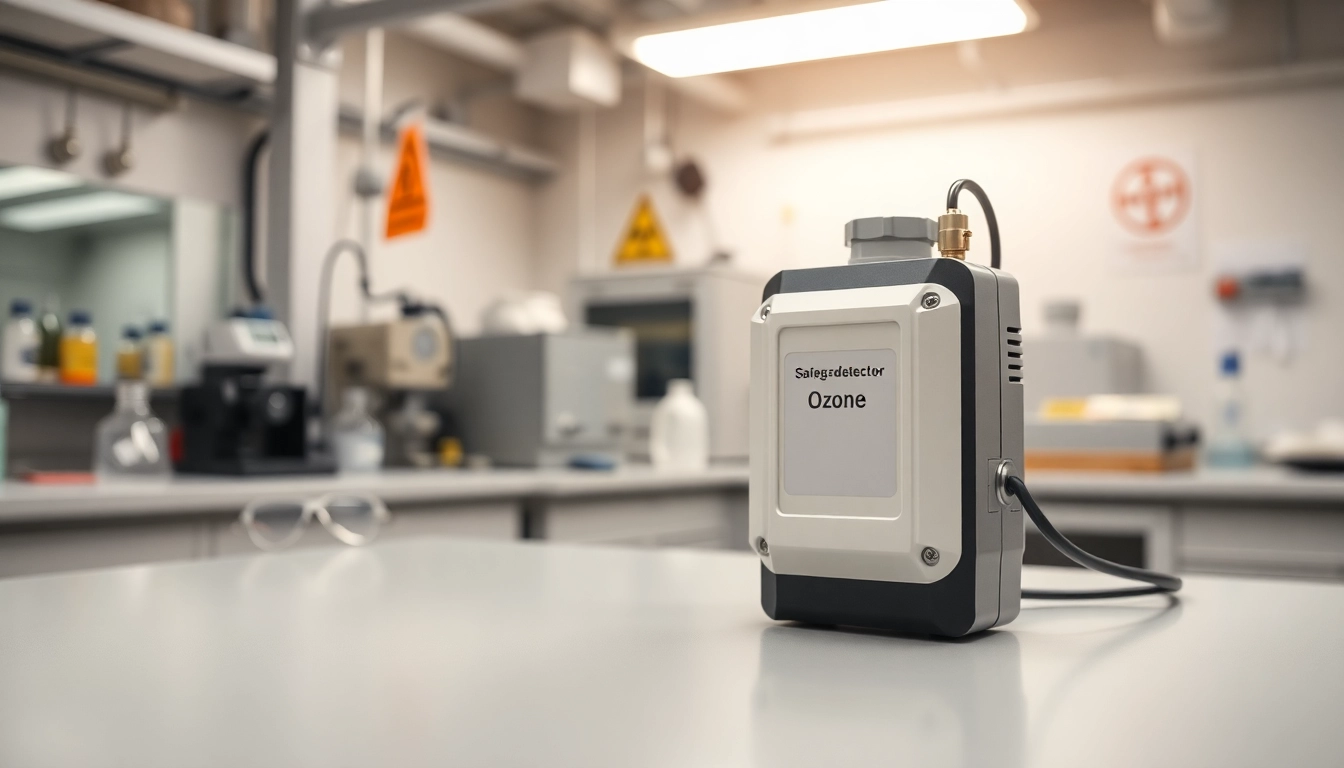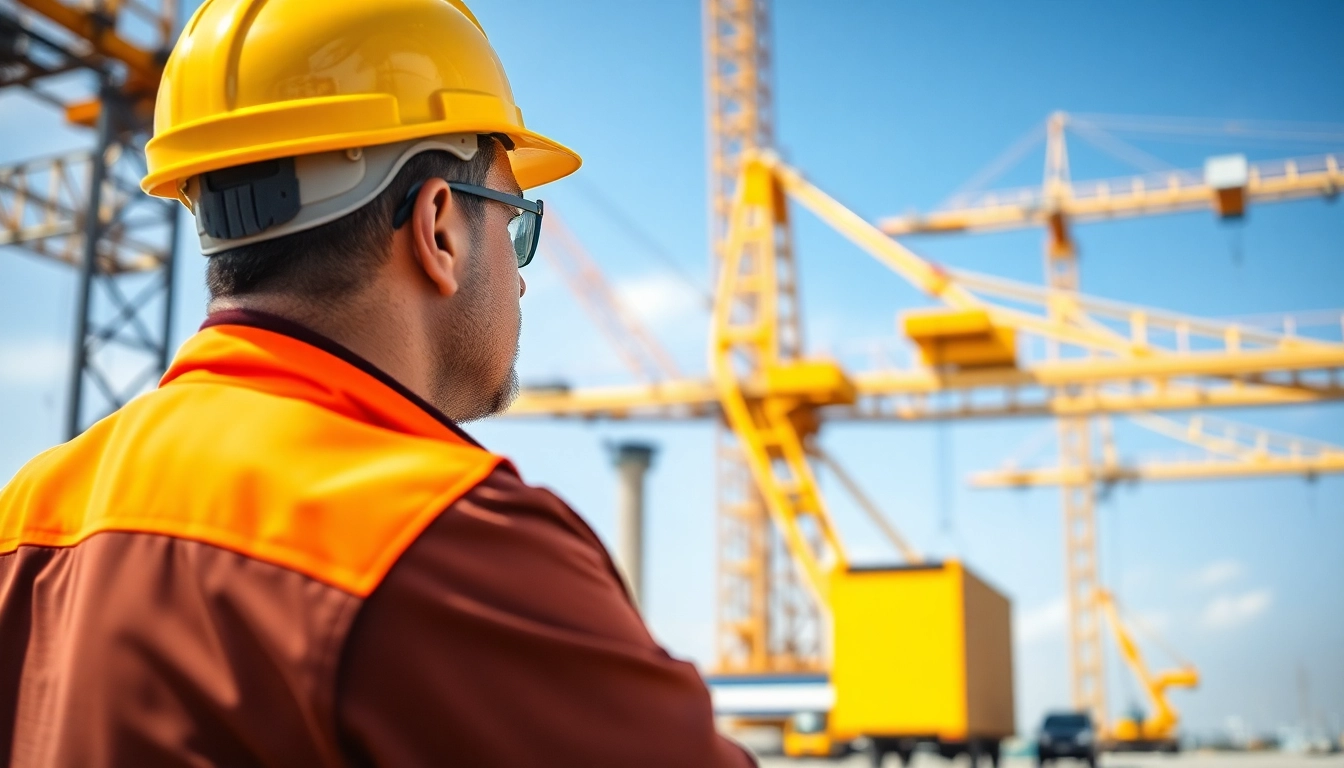Essential Insights on Ozone Gas Detectors: Features, Benefits, and Applications
Understanding Ozone Gas Detectors
What is an Ozone Gas Detector?
An ozone gas detector is a specialized instrument designed to detect the presence and concentration of ozone (O3) gas in the environment. Ozone is a colorless gas with a sharp, pungent odor, and it occurs both in the Earth’s upper atmosphere—protecting us from harmful ultraviolet radiation—and at ground level, where it can be a significant air pollutant. The capability to monitor ozone levels is critical in various settings, including industrial environments, research facilities, and environmental monitoring stations, where maintaining air quality and safeguarding human health is imperative.
How Ozone Gas Detectors Work
Ozone gas detectors function using several methodologies, primarily based on electrochemical and optical sensing technologies. In electrochemical ozone detectors, a chemical reaction occurs within a sensor that generates an electrical current proportional to the concentration of ozone in the air. This interaction allows for a real-time measurement of ozone levels.
Optical sensors, on the other hand, utilize ultraviolet light to measure ozone concentrations. These sophisticated detectors pass a beam of UV light through the air; ozone absorbs UV light at specific wavelengths, allowing the device to calculate concentration based on the intensity of light that passes through. Both types of detectors require calibration and maintenance to ensure accurate and reliable readings.
Importance of Ozone Gas Detection in Various Industries
The importance of ozone gas detection spans various industries, from environmental monitoring to manufacturing and healthcare. In environmental sciences, monitoring ozone levels is crucial for assessing air quality, understanding atmospheric processes, and complying with regulatory standards aimed at reducing air pollution and protecting public health.
In manufacturing sectors, particularly those involving ozone-generating processes (such as semiconductor manufacturing or wastewater treatment), the potential for harmful ozone exposure necessitates constant monitoring to protect workers. In healthcare, ozone is sometimes used for sterilization; hence, maintaining safe ozone levels becomes vital to ensure both effective sterilization and the safety of personnel.
With increasing awareness of pollution and air quality, ozone monitoring has become a cornerstone of environmental policy, ensuring compliance with increasingly stringent legislation.
Key Features of Ozone Gas Detectors
Sensor Technology: Types and Functions
Ozone gas detectors are equipped with a variety of sensor technologies, each offering distinct advantages and functions. The primary types include:
- Electrochemical sensors: These are widely used due to their cost-effectiveness and sensitivity to ozone. They produce a measurable current in response to ozone exposure.
- Optical sensors: These utilize UV light and are known for their high accuracy and ability to work in high ozone concentrations.
- Photoionization detectors (PID): These devices can detect a wide range of volatile compounds, including ozone, by measuring the ions produced when ozone is illuminated by UV light.
The choice of sensor technology often depends on the specific application requirements, such as sensitivity, range, and environmental conditions.
Calibration and Maintenance Accessories
Proper calibration is crucial for the accurate performance of ozone gas detectors. Calibration standards typically involve exposing the detector to a known concentration of ozone gas to adjust reading accuracy. Maintenance accessories, such as calibration kits, cleaning solutions, and replacement sensors, ensure the longevity and reliability of the detector.
Routine calibration, recommended at least annually, helps in identifying any drift in sensor performance, ensuring that the detected levels are accurate. Some modern detectors also come equipped with self-calibration features that automatically adjust sensor sensitivity based on environmental changes.
Portability and User Interface
Portability is a significant consideration in the design of ozone gas detectors. Many devices are built to be lightweight and battery-operated, allowing for easy transportation and use in various locations. A user-friendly interface is also essential; detectors often feature digital displays to show real-time readings and alerts. Sophisticated models may include data logging capabilities to record ozone levels over time, helping users to analyze trends and maintain compliance with safety regulations.
Applications of Ozone Gas Detectors
Environmental Monitoring and Compliance
Ozone gas detectors play a critical role in environmental monitoring. Government agencies and environmental organizations utilize these detectors to monitor air quality and ensure compliance with national and international regulations regarding ozone levels. By continuously measuring and reporting ozone concentrations, these detectors help in the early identification of pollution trends, thereby informing policy decisions and public health initiatives.
In regions prone to smog and air pollution, such as urban areas or industrial zones, the use of ozone gas detectors is pivotal in issuing health advisories and implementing regulatory measures aimed at reducing ozone levels.
Role in Industrial Safety
In workplaces where ozone is generated, such as in water treatment plants or manufacturing facilities, the presence of adequate ozone gas detection systems is a fundamental aspect of occupational health and safety protocols. Exposure to ozone can lead to severe health issues, including respiratory problems, skin irritation, and other long-term effects.
Establishing continuous monitoring through reliable ozone gas detectors allows for timely action in case ozone levels exceed safety thresholds. This proactive approach not only protects employees but also helps organizations meet regulatory compliance standards.
Usage in Research and Development Facilities
Research and development (R&D) laboratories often work with ozone in a range of applications, from developing new materials to studying its effects on health and the environment. Accurate ozone detection is crucial in these settings to ensure that experiments are conducted within safe parameters.
Advanced ozone detectors in R&D settings may offer features like remote monitoring and data analysis, enabling researchers to gather critical data seamlessly without interrupting their work. Such functionality enhances both safety and efficiency in research applications.
Choosing the Right Ozone Gas Detector
Factors to Consider Before Purchase
When selecting an ozone gas detector, several factors should be considered:
- Measurement Range: Ensure the detector can measure anticipated ozone levels in your specific application.
- Response Time: A faster response time is crucial in environments where ozone levels can change rapidly.
- Durability: Consider the environmental conditions where the detector will operate. Portable detectors should be rugged and able to withstand adverse conditions.
- Calibration Requirements: Evaluate how frequently the device needs calibration and whether self-calibrating options are available.
- User Interface: Look for devices with intuitive interfaces for easier operation and data interpretation.
Comparative Analysis of Leading Brands
Several brands dominate the ozone gas detector market, each offering unique features. Popular brands include:
- Honeywell: Known for durable and user-friendly units, providing reliable ozone detection in various industries.
- Dräger: Offers high-precision detectors with advanced features, such as data logging and integration with other systems.
- Air Quality Instruments: Specializes in portable detectors with fast response times suitable for fieldwork.
When comparing these brands, assess cost against features, warranty, and customer support to ensure a well-informed purchasing decision.
Cost vs. Benefit Evaluation
The cost of ozone gas detectors can vary significantly based on capabilities, sensor technology, and brand reputation. An in-depth cost versus benefit assessment should factor in:
- Initial Investment: The upfront cost of high-quality detectors can be substantial, but their accuracy and reliability can lead to offsetting safety costs over time.
- Maintenance Costs: Consider regular calibration and potential replacement sensor costs when evaluating long-term investment.
- Health and Safety Risks: Investing in accurate ozone detection helps mitigate health risks and enhances workplace safety, ultimately decreasing liability for organizations.
Organizations should weigh these factors against their specific needs and regulatory requirements to conclude the most effective and economical choice.
Future Trends in Ozone Detection Technology
Advancements in Sensor Technology
As technology continues to advance, ozone detection systems are evolving rapidly. Emerging technologies include miniaturized sensors that are not only more accurate but also more sensitive to lower concentrations of ozone. These advancements open doors for deploying detection systems in a wider range of environments and applications.
Additionally, integrating machine learning algorithms with ozone detection can aid in data analysis, enabling predictive insights for pollution trends based on real-time data collection.
Integration with IoT and Smart Systems
The integration of ozone detectors with the Internet of Things (IoT) is transforming how air quality is monitored and managed. Smart systems allow for remote access to ozone levels, enabling real-time data analytics and automated alerts to be sent to stakeholders when ozone levels reach hazardous levels.
This development enhances user experience significantly, allowing facilities to maintain compliance and implement timely interventions without constant manual monitoring.
Regulatory Trends and Their Implications
As awareness of air quality and its impact on health grows globally, regulations surrounding ozone levels are tightening. This means industries must remain vigilant and adaptable to comply with new laws, often necessitating the adoption of advanced monitoring systems. Compliance with evolving standards not only protects the health of workers and surrounding communities but also enhances corporate reputation.
Future trends indicate an increase in regulatory complexity, pushing industries to invest in state-of-the-art ozone gas detectors that provide reliable, real-time data essential for compliance and safety.













Post Comment